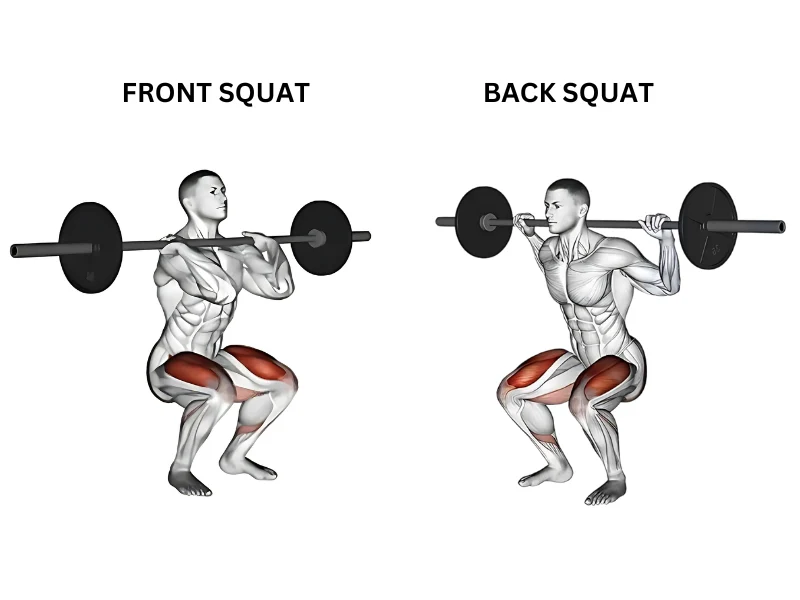My barbell front squat grip was a total disaster when I first started. Bar sliding down, wrists screaming, elbows crashing — it felt like a mess every single rep.
At one point, I honestly thought front squats just weren’t for me. I figured maybe I didn’t have the mobility, or maybe I just wasn’t “built” for the lift. But turns out, I was just gripping the damn bar wrong.
Once I stopped muscling through it and actually learned what a proper barbell front squat grip looks and feels like, everything started clicking. Wrists stopped hurting. Bar stayed put. My squat felt way more solid.
If you’ve been struggling with front squats and feel like your grip is the weak link, you’re definitely not alone. I’ve been there — and I’ve got some fixes that might actually help.
Front Squat Grip: What It Looks Like, Feels Like, and Why It Matters
Let’s get this straight — your front squat grip either makes or breaks the whole lift. And nope, it’s not one-size-fits-all.
There are two main ways to hold the barbell: clean grip and cross-arm grip. Both work — but they feel totally different, and they each come with their own pros and cons.
The clean grip is the standard you’ll see in most serious lifting circles. You rest the bar on the front of your shoulders, elbows high and pointed straight ahead. Your fingers — usually two to four — hook under the bar, kinda like catching a clean. The bar just sits there, balanced across the shelf made by your shoulders and upper chest.
👉 This one’s solid for bar control, but if your wrists or shoulders are tight? It’ll feel brutal at first.
That’s where the cross-arm grip comes in — also called the bodybuilding grip. Instead of hooking under the bar, you cross your arms in front of you and rest your hands on top of the bar to keep it in place. Elbows still stay up, but your wrists don’t get cranked nearly as hard.
👉 It’s easier to learn, especially for folks with mobility issues — but it’s not as locked in, especially when the weights start getting heavy.
So yeah, both grips can work — but choosing the right one depends on your body, your goals, and how much mobility you’ve got in the tank.
Cross Grip vs Clean Grip — Tried Both, Here’s What Hit Different
I started out using cross grip because my wrists just couldn’t handle the clean grip at first. It felt way more natural — plus, it kept me upright without killing my joints.
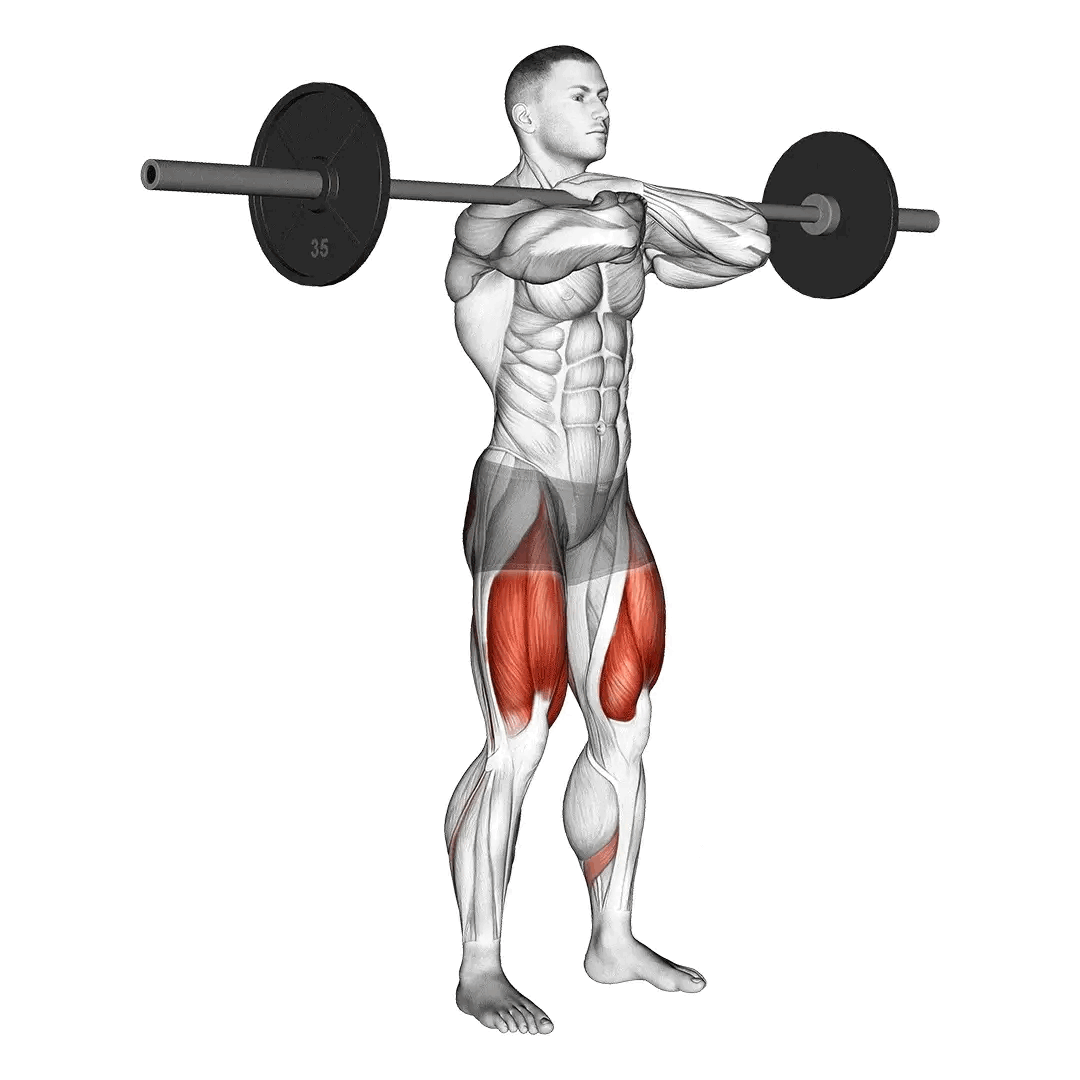
Eventually, I wanted to work toward a clean grip, especially for better bar control and carryover to Olympic lifts. It took some time, mobility work, and a lot of trial and error. But once I nailed it? Game changer.
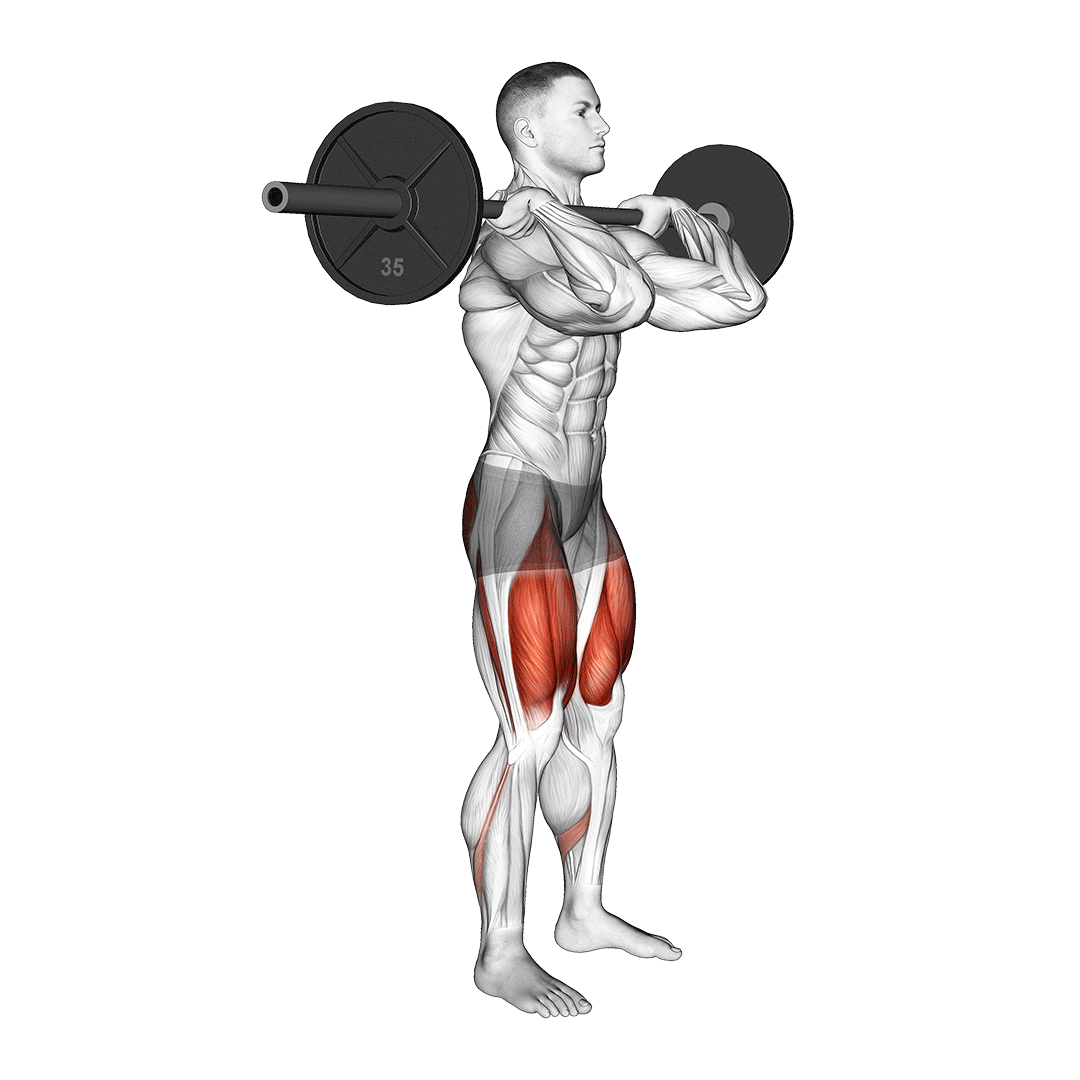
Here’s what I noticed:
- Cross Grip Pros:
- Easier on tight wrists and shoulders
- Felt more stable in the beginning
- Quicker to learn
- Cross Grip Cons:
- Bar could still slide if I got sloppy
- Limited carryover to other barbell lifts
- Clean Grip Pros:
- Solid bar position, especially under heavier loads
- Helps with wrist, shoulder, and lat engagement
- Better for transitioning into Olympic lifting
- Clean Grip Cons:
- Brutal at first if you’re stiff
- Definitely not beginner-friendly unless you’re mobile
If you’re leaning toward cross grip but not sure how to do it right, I broke it all down in Front Squat Cross Grip: Safe, Solid & Worth It.
Clean grip took me forever to get. Here’s what finally worked for my wrists in Front Squat Clean Grip: What Helped Me Finally Nail It.
How Front Squats Crushed My Muscles Along the Way
The grip wasn’t just about hand placement — it totally changed how the squat felt.
Once I got it right, the quads lit up fast. But honestly? My core and upper back took a bigger hit than I expected. Every rep felt like a full-body challenge.
- Quads = obviously smoked
- Core = shaking like crazy (especially during long sets)
- Upper back and traps = low-key sore the next day
So yeah, finding the grip that actually works for your body isn’t just about comfort. It’s about control, safety, and actually hitting the right muscles — instead of just surviving the rep.
Fixing My Setup, My Wrists, and My Sanity — One Rep at a Time
Was Placing the Bar All Wrong
At first, I had no clue where the bar was actually supposed to go. I thought it just kinda sat on the collarbone or wherever it landed. Yeah… bad idea.
Once I learned to rack it across the front of my shoulders — not just balance it up there — everything changed.
I kept my elbows up, let the bar rest on my front delts, and suddenly it didn’t roll, didn’t crush my wrists, and felt way more stable.
That one fix? Total game changer.
My Wrists Were Screaming — Here’s What Helped
Let’s be real — my wrists were crying for help in the beginning.
But I didn’t just tough it out. I had to be smart about it:
- I started adding wrist rolls and shoulder mobility drills to my warm-up.
- I quit forcing a full clean grip when my body clearly wasn’t ready.
- And I used paused reps to get a better feel for the rack position — without rushing.
Little by little, things stopped hurting and started clicking.
How I Practiced Without Wrecking Myself
I didn’t jump straight into heavy reps. Honestly, I just used the empty bar at first — and that was humbling enough.
I’d film my sets from different angles, watch my elbow position, and see if I was hitting good depth.
Then, once the form felt tight, I started creeping the weight up. Slowly. No rush.
Still struggling with posture or depth? I broke down exactly what helped in Front Squat Form: How I Fixed My Posture and Got It Right.
That slow-and-steady approach saved me. And now? Front squats don’t just feel doable — they actually feel solid.
Front Squat vs. Back Squat vs. Dumbbells — Here’s What I Actually Felt
Alright, let’s break it down — because I’ve messed with all of them, and they each hit different.
Front Squat vs Back Squat — Not Just a Weight Thing
I used to think a squat was a squat… until I actually paid attention. Front squats made my core light up, while back squats just let me pile on plates. Here’s how they felt side-by-side:
| Movement | What Hit Me Most | How It Felt | Best Use Case |
|---|---|---|---|
| Front Squat | Quads, core, upper back | Upright, super controlled, no leaning forward | Core and posture training |
| Back Squat | Glutes, hamstrings, lower back | Felt stronger but easier to "cheat" form | Moving heavy weight |
Front squats kept me honest — especially with form. I had to stay tight, brace hard, and drive elbows up or the bar would roll. Back squats? More forgiving, but easier to fall into bad habits.
Barbell vs Dumbbell Front Squats — What Surprised Me
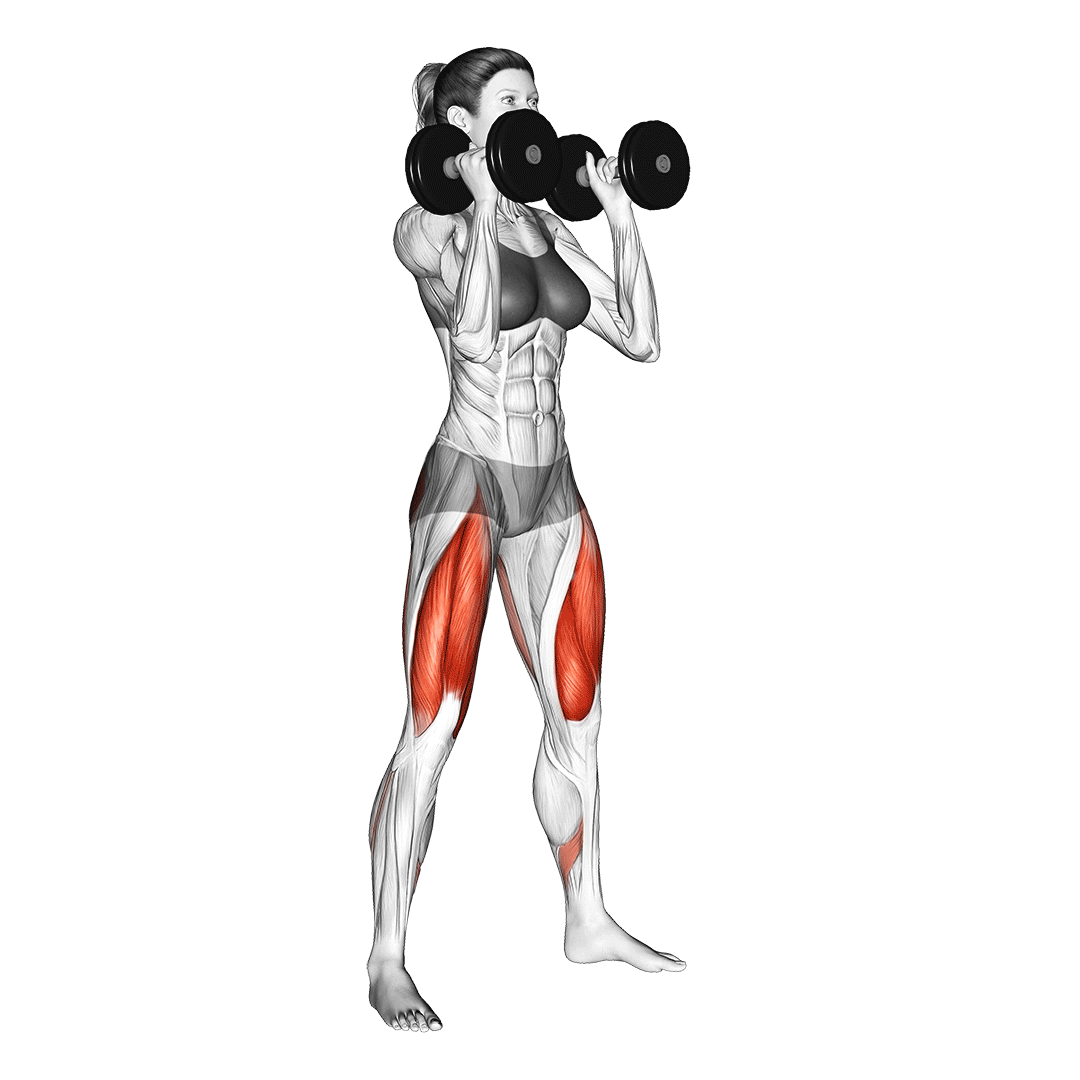
Then I tried dumbbell front squats — and wow, totally different vibe.
- First off, my wrists were way happier.
- But balancing those dumbbells? Way trickier than I thought.
- Great for control, core tension, and honestly a lifesaver when the racks were all taken at the gym.
They don’t replace barbell front squats, but they’re a solid complement.
Want to know how I made dumbbell front squats feel smooth and strong? I wrote it all out in Dumbbell Front Squats: How I Nailed the Form and Tips.
Getting my barbell front squat grip right changed everything—no more wrist pain, just smooth movement and stronger reps. Seriously, once your grip’s locked in, everything else falls into place.
FAQs about Barbell Front Squat Grip
The grip you use depends on your mobility and goals. Most lifters go with the clean grip, where your fingertips support the bar while your elbows stay high — this is the gold standard, especially if you’re training for Olympic lifts. If your wrists or shoulders are tight, the cross-arm grip (aka bodybuilding or California grip) is a solid alternative. It’s more forgiving on mobility and easier to learn, though it’s less stable under heavy loads. So, if you’ve got the range, aim for clean grip long-term — but start with what feels safest and most stable right now.
First, place the barbell on your front delts — not your collarbone — so it rests comfortably across the shoulders. For a clean grip, place your hands just outside shoulder-width and let the bar sit on your fingertips. Keep your elbows high and pointed forward. For a cross-arm grip, cross your arms in front of the bar, with each hand resting on the opposite shoulder to stabilize the bar. Either way, the key is keeping elbows up and chest tall, so the bar stays locked in and your wrists don’t take all the pressure.
The California grip is another name for the cross-arm grip in front squats. It’s a beginner-friendly option that’s easier on tight wrists and shoulders. You cross your arms over the barbell — right hand to left shoulder, left hand to right shoulder — and use your arms to hold the bar in place on your front delts. Your elbows should stay lifted to keep the bar from rolling. It’s not as stable as the clean grip under heavy weight, but it’s a great workaround while you’re building up mobility or just getting started with front squats.
It depends on the type of squat. For back squats, you’ll grip the bar just outside your shoulders, keeping your hands tight to your body and wrists neutral. For front squats, the clean grip is generally considered the best — especially for stability, control, and carryover to Olympic lifts. That said, if you’re limited by wrist or shoulder mobility, the cross-arm (California) grip is a good substitute. Bottom line: the “best” grip is the one that gives you strong bar control, lets you maintain good posture, and doesn’t jack up your wrists or elbows.
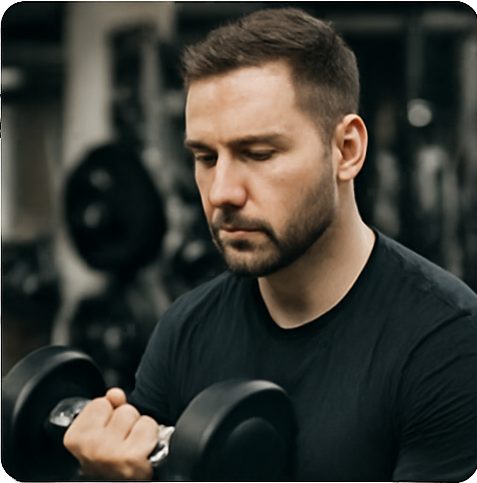
Hi, I’m the editor here at Leadman Fitness. We’re a manufacturer focused on producing top-quality barbells, plates, kettlebells, dumbbells, and strength training gear. I’ve been into sports and fitness for years, and I know my way around all kinds of gym equipment—both from using it and helping create it.
I spend a lot of time understanding the real problems people run into in the gym—whether it’s beginners trying to pick the right gear or experienced lifters looking for something more durable. I stay in close touch with our production team and talk directly with other equipment makers, so we’re always improving based on what real lifters and coaches are looking for.
What I share comes from hands-on experience—stuff that actually helps people train better, not just in theory, but in real gyms.
